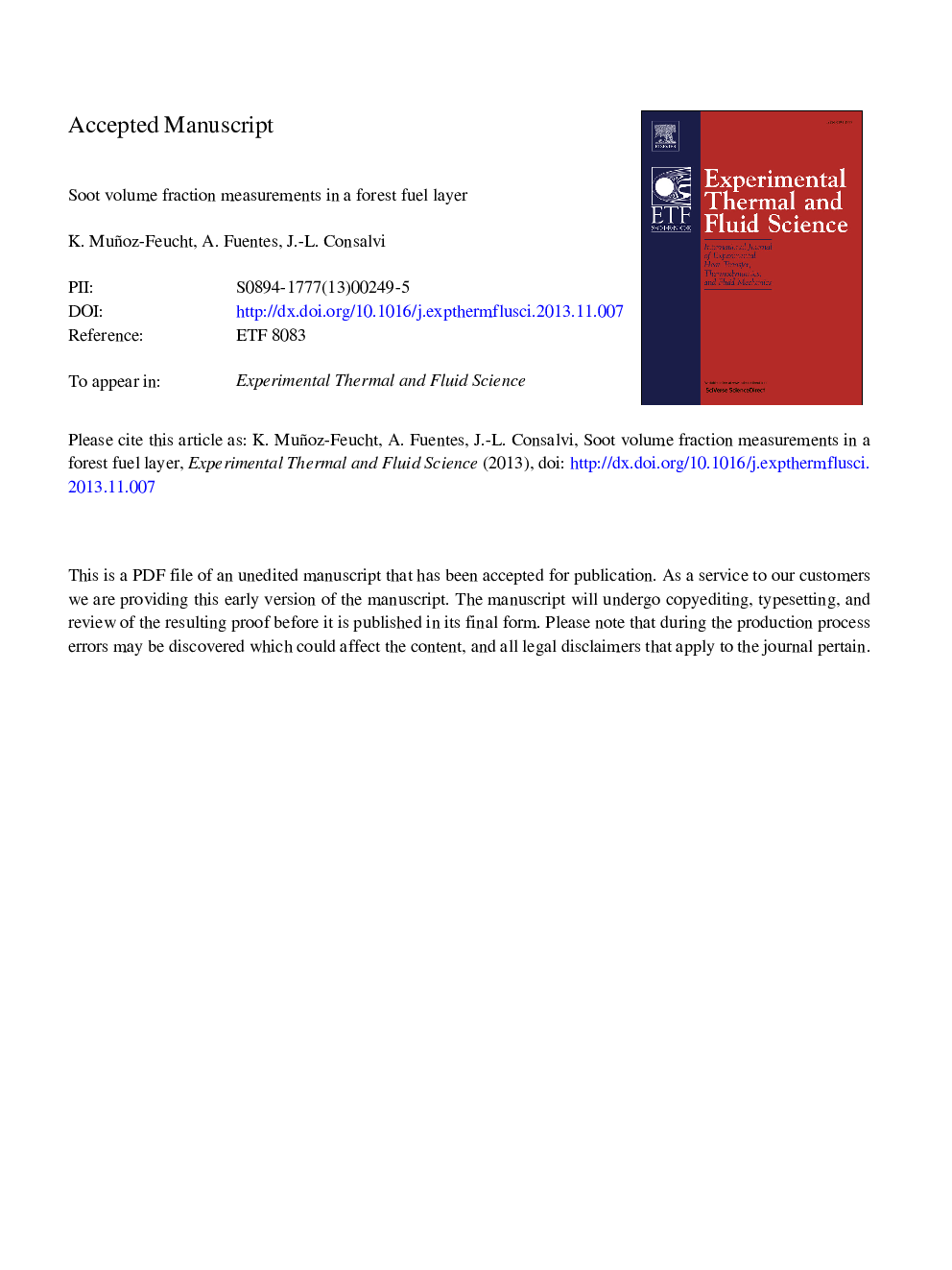| Article ID | Journal | Published Year | Pages | File Type |
|---|---|---|---|---|
| 651691 | Experimental Thermal and Fluid Science | 2014 | 40 Pages |
Abstract
This paper presents an experimental study of soot particles produced during the combustion of Radiata died pine needles. The samples were oven dried at 333Â K for 12Â h, then the fuel elements were prepared in order to obtain a small cylindrical fuel sample of about 1.50Â g. The wildland fuel layer was ignited with 0.7Â mL of ethanol obtaining a homogeneous combustion on the surface of the fuel elements. Two stages were observed; the flickering stage where the ethanol combustion occurs followed by a laminar stage, here the biomass is partially burned. During the second stage, the time evolution of flame height was determined based on images of CH* spontaneous emission from the reaction zone. The geometry of the reaction zone was assessed by means of a segmentation approach. The maximum flame height observed in the laminar stage was about 46Â mm from the surface of the biomass, and then decreases linearly with time. Meanwhile the soot volume fractions were evaluated by using a laser extinction technique. The axisymmetric flame geometry observed in the laminar stage allows applying a deconvolution technique together with a Tikhonov regularization method in order to obtain local radial profiles and integrated soot volume fractions. The sooting behavior obtained was similar to that observed in laminar diffusion flame in coflow configurations. The soot volume fractions were found to be relatively small with maximum of about 0.6Â ppm. In addition, as expected from the extinction measurements, the soot production decreases along the time.
Related Topics
Physical Sciences and Engineering
Chemical Engineering
Fluid Flow and Transfer Processes
Authors
K. Muñoz-Feucht, A. Fuentes, J.-L. Consalvi,
